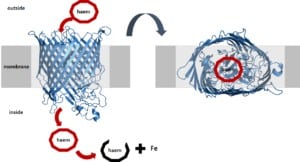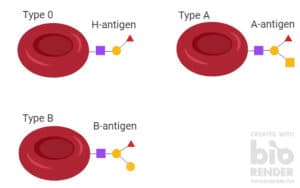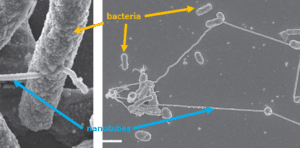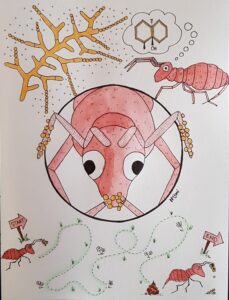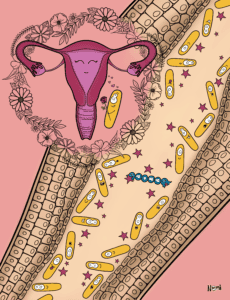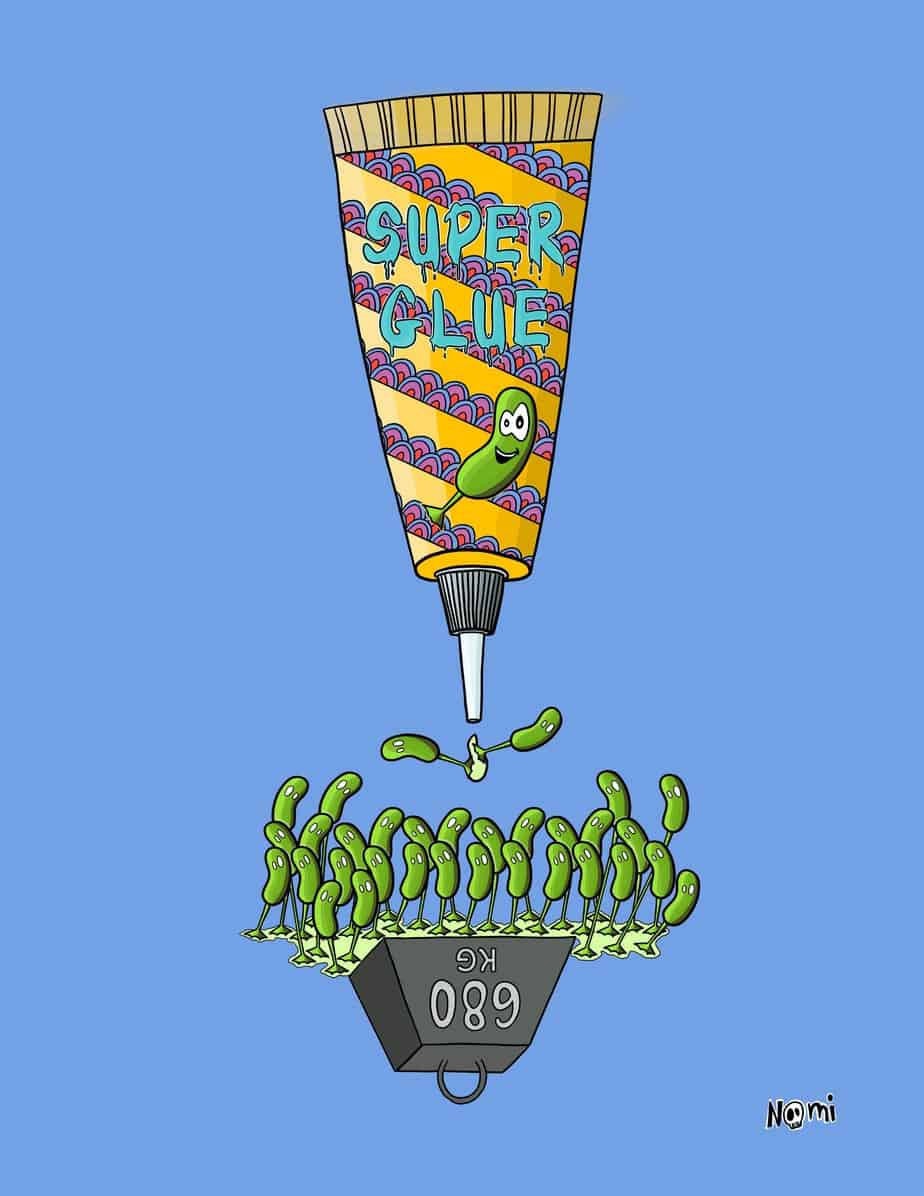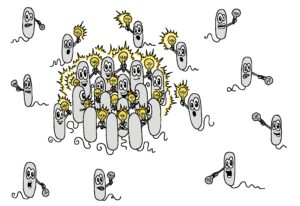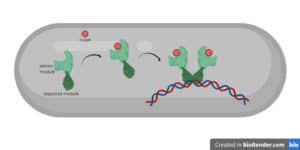Just when I thought bacteria could not get any more awesome, I come across studies that show that bacteria conduct electricity.
Yes, you read correctly.
So-called cable bacteria transport electrons from cell to cell over centimetre-long distances and thus conduct electricity.
Mind-blowing.
It all started when in 2001, researchers measured electric currents in aquatic sediments. Soon afterwards, they found that this current is due to specific bacteria that exchange electrons with the surrounding.
And they called these bacteria cable bacteria.
So, let’s look at these fascinating species in more detail.
What are cable bacteria?
Cable bacteria are multicellular bacterial organisms meaning many bacteria from the same family are living very closely together. They usually share the same food and nutrients and help each other out. This tightness makes the whole bacterial community stronger and often gives them new superpowers – like in this case, the multicellular cable bacteria can conduct electricity.
Until now, researchers do not know much about cable bacteria, as they usually live in marine, freshwater and salt-marsh sediments. Here, they often use unusual components like sulfur or sulfur complexes to gain energy and grow. Such conditions are pretty difficult to imitate. So currently, researchers are struggling to grow them in a lab.
However, recent studies managed to find out what cable bacteria look like and how cable bacteria conduct electricity.
What do cable bacteria look like?
For this, researchers took water samples from different locations. They then visualised the cable bacteria with different spectroscopic techniques. With these machines, researchers can magnify the tiniest things and get high-resolution pictures of bacterial cells.
Within these pictures, they actually saw that one “cable bacterium” is a multi-cellular microorganism. In the pictures below, you can see long chains or cables. Interestingly, these are completely surrounded by isolating walls. And within these cables, you can see single compartments, which are the bacterial cells.
These cables or chains, researchers call filaments and they can get up to 7 cm long.
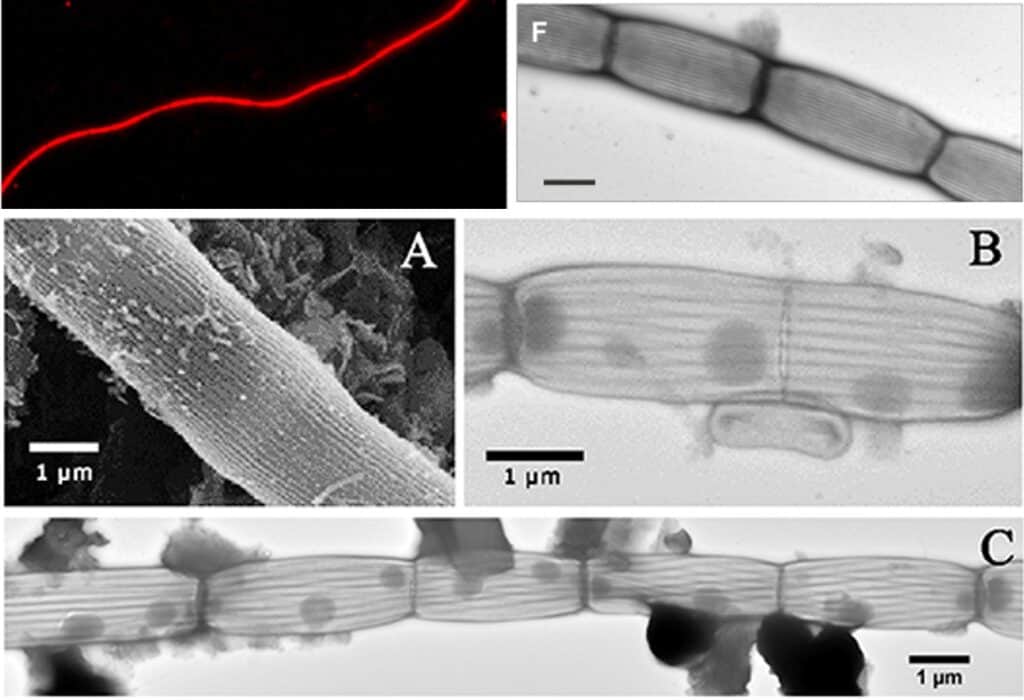
What are cable bacteria made of?
Researchers are still trying to classify the family of cable bacteria. However, they know so far that cable bacteria are rod-shaped Gram-negative bacteria. This means these bacteria have an inner and an outer membrane as a surrounding and protecting wall.
Generally, between the inner and outer membrane is a liquid space that is the periplasm. This space kind of works as a flexible and soft buffer zone between the two membranes.
However, in cable bacteria, one bacterial cell is surrounded by an inner membrane to protect its cellular content. Then these cells arrange into a chain and share one common liquid periplasm. Next, one common outer membrane surrounds and stabilizes this bacterial-cell-periplasm chain. So, one outer membrane isolates the whole bacterial chain from the outside.
The whole chain is further held together by so-called fibres. You can see these fibres as those long dark grey lines in the pictures above. These fibres go along the cells through the whole periplasm of the cable filament. Researchers think, that these fibres give the cable its structure, stabilise the cable and protect it from breaking.
As you can see, this whole structure indeed looks like a cable and insulate the bacteria on the inside from the outside. That’s pretty much where these bacteria got their name from.
How do cable bacteria transport electrons and conduct electricity?
And why would they even create an electric current?
The short answer is to survive. As always, all organisms just want and need to survive.
So, let’s look at this in more detail.
Cable bacteria live in water sediments. These waters are full of oxygen in the top layers close to the surface. And they are full of sulfur in the deeper layers.
And cable bacteria use this oxygen-sulfur gradient to conduct electricity.
Cable bacteria now actually sense the oxygen in the water and align perpendicular to the waterfront. This means one end of the cable is in the oxygen-rich area at the top and the other end in the sulfur-rich area towards the bottom. Similar to the model below.
Bacteria breathe sulfur and conduct electricity
Now the filament works as a half-cell.
The bacteria in the deeper layers “breathe” the sulfur. This produces electrons (e–) and protons (H+) as an anodic half-reaction. These electrons then travel along the cable within the liquid periplasm to the upper part of the cable. Here, the bacteria consume these electrons to reduce oxygen in a cathodic half-reaction.

These oxidation and reduction processes are part of each cell’s metabolism. So, this is what keeps every cell alive.
However, usually, both reactions happen within the same cell so that one cell gains energy from both reactions at the same time. Interestingly, cable bacteria found a way to uncouple the oxidation and reduction reactions.
Hence, oxidation and reduction mechanisms happen in different cells – one reaction in cells at the bottom of the cable, the other reaction in cells at the top of the cable. Yet, they somehow learned to do both reactions within one system – the cable. And this is the mind-blowing part.
What does it mean for the environment?
This unusual metabolism of cable bacteria has some interesting effects on their surroundings. These reactions produce protons in the deeper water layer and reduce them in the surface layer. This leads to a drop in pH in the deeper layer and an increase in the pH near the surface. This can mineralise and demineralise metal complexes.
Researchers suggest that these (de-)mineralisation processes also have an impact on the geochemistry within the local environment in the water. However, how exactly the metabolism of cable bacteria influences the environment and maybe other species is still not well understood.
Since researchers only recently discovered cable bacteria, it is understandable that there are still many questions unanswered. But I am convinced that we will hear many more interesting facts about them and who knows, maybe one day bacteria will fuel some kind of seawater-based batteries…
Takeaway from this week’s articles:
- cable bacteria are filaments of a multitude of bacterial cells
- they can produce and consume electrons and transport them from one end to the other
- this electric current shapes the local environment in water sediments


